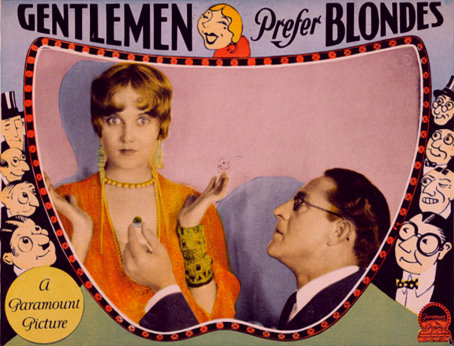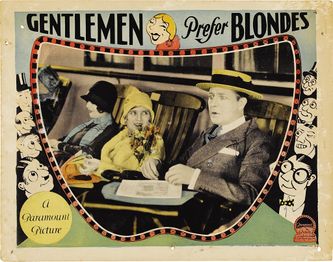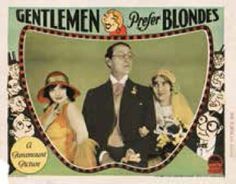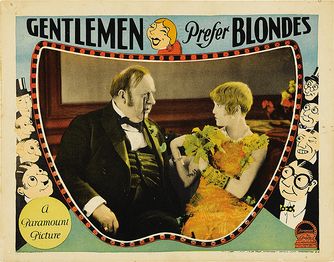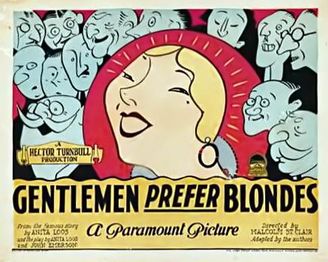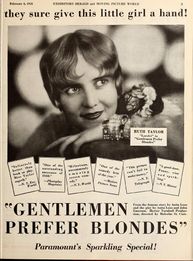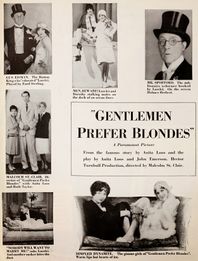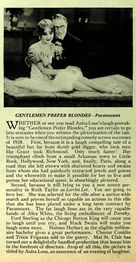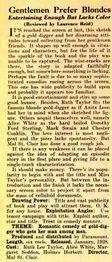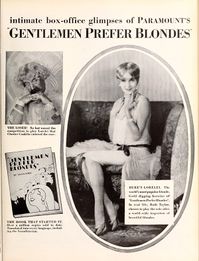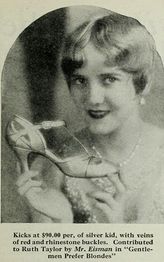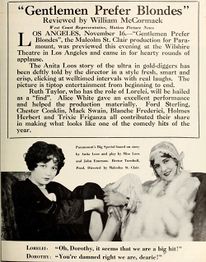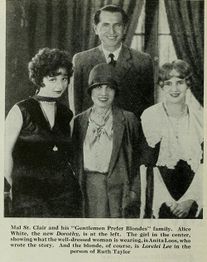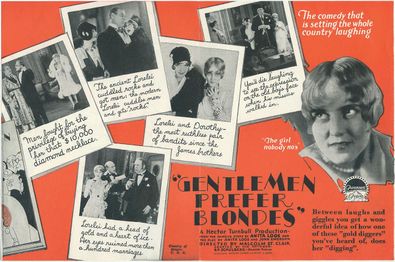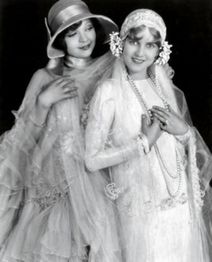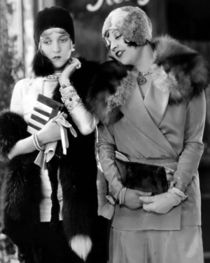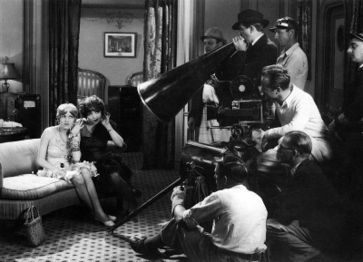Gentlemen Prefer Blondes (lost first-adaptation silent comedy film; 1928): Difference between revisions
No edit summary |
|||
| Line 32: | Line 32: | ||
Gentlemen-prefer-blondes-1928-clipping06.jpg | Gentlemen-prefer-blondes-1928-clipping06.jpg | ||
Gentlemen-prefer-blondes-1928-clipping07.jpg | Gentlemen-prefer-blondes-1928-clipping07.jpg | ||
Gentlemen Prefer Blondes 1928 ad.jpg | |||
Alice White and Ruth Taylor GPB 1928.jpg|Ruth Taylor as Lorelei Lee and Alice White as Dorothy Shaw. | Alice White and Ruth Taylor GPB 1928.jpg|Ruth Taylor as Lorelei Lee and Alice White as Dorothy Shaw. | ||
Alice White and Ruth Taylor GPB 1928 2.jpg|Another still of Ruth Taylor as Lorelei Lee and Alice White as Dorothy Shaw. | Alice White and Ruth Taylor GPB 1928 2.jpg|Another still of Ruth Taylor as Lorelei Lee and Alice White as Dorothy Shaw. | ||
Revision as of 22:55, 10 May 2017
Gentlemen Prefer Blondes is a 1928 American silent comedy film directed by Mal St. Clair, co-written by Anita Loos based on her 1925 novel and starring Ruth Taylor as Lorelei Lee and Alice White as Dorothy Shaw. It is the first adaptation of Anita Loos novel which later had a 1949 Broadway version starring Carol Channing as Lorelei Lee and more known 1953 film adaptation starring Marilyn Monroe as Lorelei Lee.
The film was released in January 22, 1928 by Paramount Pictures.[1]
Plot
The plot involves the notorious blonde gold digger Lorelei Lee (Ruth Taylor) books passage on an ocean liner for herself and a friend, Dorothy Shaw (Alice White), with money "borrowed" from Chicago button king Gus Eisman (Ford Sterling). Also bound for Europe on the liner is America's richest bachelor, Henry Spoffard (Holmes Herbert), who plans to investigate reports of immoral activities of American tourists in Paris. To amuse herself while Spoffard is seasick in his cabin, Lorelei persuades Sir Francis Beekman (Mack Swain), a wealthy Englishman who is attracted to her, to give her money to buy his wife's diamond tiara.
In Paris, Lorelei lures Spoffard to her room, then hides him in a closet while his mother, their lawyer, the Beekmans, and Gus Eisman all come demanding explanations. The situation is finally resolved; Spoffard and Lorelei marry on the return trip to New York.[2]
Status
The film has been lost for many years and only a few stills, newspaper advertisements, and lobby posters are known to survived.
Gallery
References
- ↑ IMDb release dates of the film. Retrieved 04 Mar '17.
- ↑ silenthollywood.com about the film. Retrieved 04 Mar '17.
